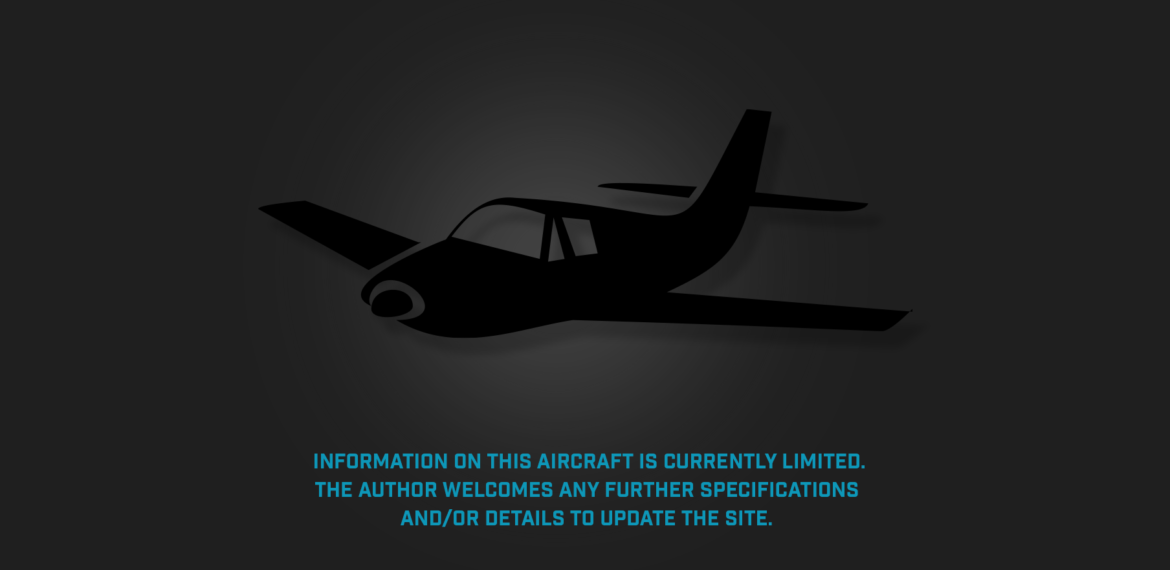Photograph:
Not yet available
Country of origin:
Australia
Description:
Single-seat parasol-wing amateur-built aircraft
Power Plant:
One 22 kw (30 hp) Blackburne Thrush three-cylinder [1500 cc] air-cooled radial engine
Specifications:
History:
Maxwell Angwin of Essendon, VIC was a dental mechanic who designed and commenced construction of a parasol wing single-seat light aircraft looking similar to a fighter aircraft designed and built in Poland by PZL. With the assistance of Jack Hayward, who was employed in the electrical engineering industry, they designed the aircraft, seeking directions from the Civil Aviation Board (CAB) in December 1929. Further assistance in the design was provided by Mr E J Rennie, a lecturer in Civil Engineering at the University of Melbourne in Victoria.
Drawings were submitted to the CAB in June 1930 and construction commenced at the home of Mr Angwin’s parents in Essendon, VIC. An inspector from CAB visited and checked work on the aircraft in May 1931. At that time the builders were planning to install a converted Henderson motor cycle engine and they were informed this engine did not meet the requirements of the CAB. Construction was of wood and some spruce was used. High tensile steel was obtained from LASCo at Coode Island, VIC for metal fittings.
In the event it was decided to obtain a 22 kw (30 hp) Blackburne Thrush single-ignition three cylinder engine and this was installed together with a 36 litre (8 Imp gal) fuel tank in the upper fuselage. A further CAB inspection in November 1933 revealed excellent workmanship. However, during early testing it was found there was some structural instability and the aircraft was subsequently rebuilt as a biplane. A number of short hops were made at Essendon and during one the aircraft crashed, the starboard wing striking the ground, the wing spar, undercarriage and propeller being broken. It was considered the engine was not providing enough power.
The aircraft, although not named, became known as ‘The Blowfly’ during its testing. Later in April 1934 it was suggested a Pobjoy radial engine should be installed but finance to obtain such a unit was not forthcoming. The aircraft in June 1934 was placed on display at the Motor Show at the Melbourne Exhibition Building.
Subsequently the aircraft was dismantled and some parts were used as the basis for a new biplane which was built over the following three years using new drawings, this time the builders using a welded steel tube airframe. The wing spars from the original aircraft were used to build new wings with an NACA M12 section.
This new aircraft had a straight-through upper wing with interplane struts with ailerons only on the upper wing. A 30 kw (40 hp) Salmson AD-9 radial engine was obtained and a propeller was built by Fitzsimon Co. This aircraft was fitted with a 45 litre (10 Imp gal) fuel tank. In 1937 it was displayed at the Melbourne Motor Show in the Melbourne Exhibition Building. In December that year Mr Angwin sought approval for an experimental licence and to test the aircraft at Essendon.
However, when the aircraft was nearing completion Mr Angwin and his brother were involved in the crash of a de Havilland DH.60 at Phillip Island, VIC on 30 December 1935, his brother being killed. Nothing further happened with the biplane but it was noted at some stage taxiing at Essendon. It is believed to have never been flown.
The aircraft was obtained by the Commonwealth Government during World War II and was used as an instructional airframe at the Melbourne Technical College, compensation later being paid to Mr Angwin. He later went on to serve with the RAAF during World War II. The ultimate fate of the aircraft is not known.

